Cosmic Twist: The Universe Could Be Spinning – Can Rotation Solve The Hubble Puzzle?
Eddie Gonzales Jr. – MessageToEagle.com – A new study suggests the universe may rotate slowly, potentially solving a major astronomy puzzle.
The Whirlpool Galaxy, M51, is a spiral galaxy located 31 million light-years away. Image credit: NASA
“To paraphrase the Greek philosopher Heraclitus of Ephesus, who famously said “Panta Rhei”—everything moves, we thought that perhaps Panta Kykloutai—everything turns,” said István Szapudi of the University of Hawaiʻi Institute for Astronomy.
Current models say the universe expands evenly in all directions, with no sign of rotation. This idea fits most of what astronomers observe. But it doesn’t explain the so-called “Hubble tension”—a long-standing disagreement between two ways of measuring how fast the universe is expanding.
Supernovae, Big Bang
One method looks at distant exploding stars or supernovae, to measure the distances to galaxies, and gives an expansion rate for the universe throughout the past few billion years. The other method uses the relic radiation from the Big Bang and gives the expansion rate of the very early Universe, about 13 billion years ago. Each gives a different value for the expansion rate.
Szapudi’s team developed a mathematical model of the universe. First, it followed standard rules. Then they added a tiny amount of rotation. That small change made a big difference.
“Much to our surprise, we found that our model with rotation resolves the paradox without contradicting current astronomical measurements. Even better, it is compatible with other models that assume rotation. Therefore, perhaps, everything really does turn. Or, Panta Kykloutai! ” noted Szapudi.
Their model suggests the universe could rotate once every 500 billion years—too slow to detect easily, but enough to affect how space expands over time.
The idea doesn’t break any known laws of physics. And it might explain why measurements of the universe’s growth don’t quite agree.
The next step is turning the theory into a full computer model—and finding ways to spot signs of this slow cosmic spin.
Written by Eddie Gonzales Jr. – MessageToEagle.com Staff Writer
Related Posts
-
 Earth’s Water Was Around Before Earth
No Comments | Feb 3, 2022
Earth’s Water Was Around Before Earth
No Comments | Feb 3, 2022 -
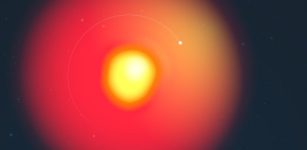 Betelgeuse Star Has A Stellar Companion
No Comments | Oct 22, 2024
Betelgeuse Star Has A Stellar Companion
No Comments | Oct 22, 2024 -
 OJ 287: New Image From The Heart Of A Mysterious Galaxy
No Comments | Aug 1, 2025
OJ 287: New Image From The Heart Of A Mysterious Galaxy
No Comments | Aug 1, 2025 -
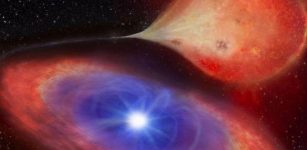 ‘Feeding Habits’ Of White Hungry Dwarf Stars – New Discovery
No Comments | Dec 18, 2017
‘Feeding Habits’ Of White Hungry Dwarf Stars – New Discovery
No Comments | Dec 18, 2017 -
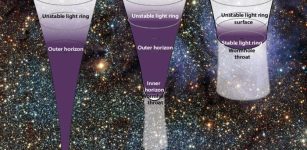 Black Holes: Beyond The Singularity
No Comments | May 7, 2025
Black Holes: Beyond The Singularity
No Comments | May 7, 2025 -
 Hubble’s Wide Field Camera 3 Recovered, Collecting Science Data
No Comments | Jan 17, 2019
Hubble’s Wide Field Camera 3 Recovered, Collecting Science Data
No Comments | Jan 17, 2019 -
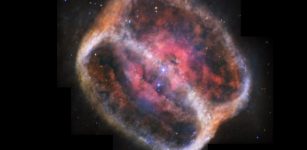 Thanks To Webb Webb Scientists Examine Turbulent Nature Of Nebula NGC 1514
No Comments | Apr 15, 2025
Thanks To Webb Webb Scientists Examine Turbulent Nature Of Nebula NGC 1514
No Comments | Apr 15, 2025 -
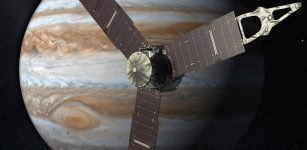 NASA’s Juno Solves 39-Year Old Enigma Of Jupiter Lightning
No Comments | Jun 10, 2018
NASA’s Juno Solves 39-Year Old Enigma Of Jupiter Lightning
No Comments | Jun 10, 2018 -
 Resources In Lunar Soil And How They Might Be Used To Sustain Life – Study
No Comments | Aug 7, 2021
Resources In Lunar Soil And How They Might Be Used To Sustain Life – Study
No Comments | Aug 7, 2021 -
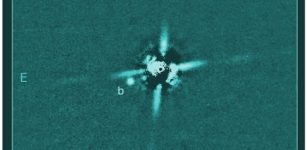 One Of The Youngest Planets Ever Found Around A Distant Infant Star – Discovered
No Comments | Oct 23, 2021
One Of The Youngest Planets Ever Found Around A Distant Infant Star – Discovered
No Comments | Oct 23, 2021

